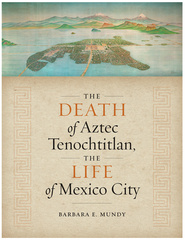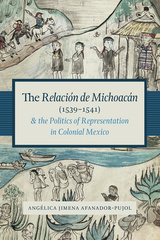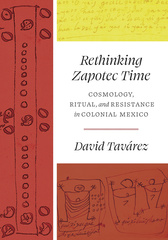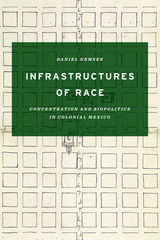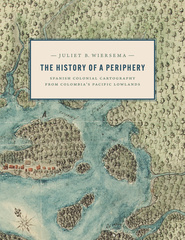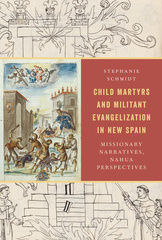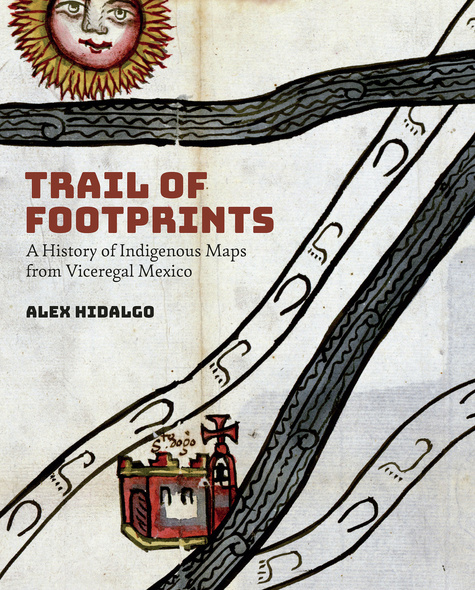
Trail of Footprints
A History of Indigenous Maps from Viceregal Mexico
Trail of Footprints offers an intimate glimpse into the commission, circulation, and use of indigenous maps from colonial Mexico. A collection of sixty largely unpublished maps from the late sixteenth to the eighteenth centuries and made in the southern region of Oaxaca anchors an analysis of the way ethnically diverse societies produced knowledge in colonial settings. Mapmaking, proposes Hidalgo, formed part of an epistemological shift tied to the negotiation of land and natural resources between the region’s Spanish, Indian, and mixed-race communities. The craft of making maps drew from social memory, indigenous and European conceptions of space and ritual, and Spanish legal practices designed to adjust spatial boundaries in the New World. Indigenous mapmaking brought together a distinct coalition of social actors—Indian leaders, native towns, notaries, surveyors, judges, artisans, merchants, muleteers, collectors, and painters—who participated in the critical observation of the region’s geographic features. Demand for maps reconfigured technologies associated with the making of colorants, adhesives, and paper that drew from Indian botany and experimentation, trans-Atlantic commerce, and Iberian notarial culture. The maps in this study reflect a regional perspective associated with Oaxaca’s decentralized organization, its strategic position amidst a network of important trade routes that linked central Mexico to Central America, and the ruggedness and diversity of its physical landscape.
Hidalgo's meticulously researched, clearly written, and generously illustrated study is innovative and informative.
Tracing the legal, social, cultural, and political history of [Oaxacan maps created by Indigenous mapmakers], Hidalgo sheds new light on the purpose, production, and preservation of maps as well as the lives of Indigenous peoples and Spaniards alike involved in their production. The result is a vivid re-orientation of Oaxacan history that speaks to the historical power of collaboration, adaptation, and cartography...In tracing the long lives of these maps, Hidalgo demonstrates, among other important interventions, the potency of Indigenous skills, ideas, and ways of knowing in creating and charting Oaxacan history.
Delightful…[A] beautifully illustrated book...Trail of Footprints will be of wide interest to scholars of Latin-American cultures and histories, and to scholars of cartography. Its analysis offers a richly evidenced discussion of a wide range of maps and their production and circulation. The book usefully probes the theoretical discussions around cartography and colonialism, but ultimately lets the rich evidence shine through. Its production is high quality from the striking cover design, the use of full- and half-page colour reproductions of maps, to the layout that ensures close correspondence between images and textual discussion.
[A] carefully considered analysis…What Hidalgo demonstrates is that indigenous mapping did not disappear with the advent of Spanish conquistadores. Rather, indigenous mapping evolved under the influence of Spanish mapping practices and according to the needs of Spanish officials and administrators...[an] important book.
Thoroughly researched and wonderfully illustrated...The wide scope of the author’s analysis, coupled with an innovative methodology, makes this book indispensable for students and scholars of art history as well as history and its various subfields, including ethno-, legal, environmental, cartographic, and transatlantic history. The argument of the author, perhaps most ardently articulated in the epilogue, builds on a growing body of scholarship that amplifies the contributions of indigenous artists, intellectuals, and notaries while calling attention to the silences, gaps, and biases of the archive.
[A] model of scholarship…[with] clear and engaging writing, a strength of the book as a whole...Trail of Footprints also counters pervasive notions that indigenous maps were marginal, distrusted, misunderstood, or even useless.
[Trail of Footprints] offers a pleasing and informative overview of Indigenous mapping from viceregal Mexico and engages well with Indigenous uses of and perspectives on these documents during an intense period of intercultural encounter.
The author effectively demonstrates that maps in early colonial period of Mexico were not just pieces of paper; instead, they were powerful tools that connected an earlier tradition to a new rapidly changing environment. This aspect, I believe, is the appeal of the volume for many different audiences, specifically those with an interest in the archaeology and colonial history of Latin America.
Trail of Footprints offers a robust argument that maps were embedded in social relationships from their commission to their realization and their subsequent interpretation...Hidalgo’s book provides rich insights into the role of maps in the push-and-pull between patrons, painters, native town councils, and Spanish bureaucracy in New Spain – and of the afterlives of these maps in later institutional collections.
A stimulating, innovative, and highly readable study that sheds light on the function of maps in the complex, often multi-layered, and even contradictory relations between Indigenous actors (communities, nobility, or the respected elders) on one side, and Spanish parties (magistrates, judges, hacendados or small-scale agricultural entrepreneurs) on the other...Hidalgo makes the convincing case that early modern mapping was not only an instrument of colonial power aimed at controlling conquered spaces but also an instrument of the Indigenous population in defending what they considered theirs...Its accessible language and wealth of data, anecdotes, and examples makes this a welcome introduction to this complex subject for a wide audience.
Trail of Footprints is a handsome volume, richly illustrated in color on thick glossy paper, and quite readable. The author conveys a good deal of information about the intertwining systems within which the maps he examines were embedded during the centuries of Spanish colonial occupation in Mexico.
Hidalgo’s masterful study is brilliantly conceived and organized and will become a must-read for both specialists and those new to the field...Map historians will value Hildalgo’s processual approach, embracing the social, cultural, political, and legal contexts from which these documents emerged; techniques, practices, and materiality; and the reception and afterlives of these complex documents. This elegant, engaging, and thoroughly researched volume will, however, have wide appeal among specialists in a host of other fields, including the history of science, environmental history, textual studies, and art history.
A beautifully compiled book that presents a glimpse into the evolving art and function of mapmaking by Indigenous artisans within Mexico’s changing colonial landscapes...A highly enjoyable read...Trail of Footprints would make a beautiful addition to the personal library of any art historian, as well as anyone interested in Indigenous arts, histories, glyphic traditions, or first-person accounts from Mexico’s colonial period.
[An] innovative study of Indigenous mapmaking and intellectual history...By placing Indigenous maps at the center of the study and presenting a distinct perspective with each chapter (patrons, painters, materials, and authentication), Hidalgo puts forth a compelling and comprehensive view of Indigenous mapmaking that highlights the nuances and complexities of how Indigenous maps were understood and used...Hidalgo’s well-researched book presents a narrative of a vibrant and evolving Indigenous mapmaking tradition that adapted over the course of the colonial period...What is more, Hidalgo’s masterful translation of complex details from primary source documents into stimulating narratives will appeal to a broad readership interested in the history of colonial Mexico.
- Illustrations
- Notes on Translation
- Acknowledgments
- Introduction
- Chapter 1. Patrons
- Chapter 2. Painters
- Chapter 3. Materials
- Chapter 4. Authentication
- Epilogue. Afterlife
- Notes
- Bibliography
- Index




